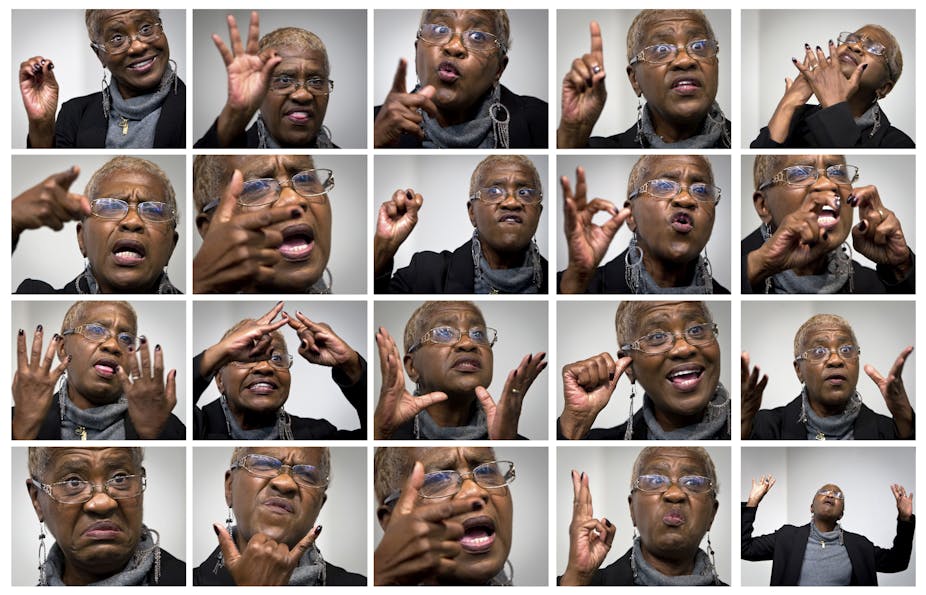There is no doubt that technology can make learning easier. Telematics allows a lecturer to stand in one place and present a class to satellite campuses anywhere in the world. Podcasts are also becoming a popular educational tool.
But these innovations rely on students being able to hear what is being said, so they aren’t of any use for deaf or hearing impaired students. The latest available data from South Africa’s Department of Higher Education and Training puts the number of deaf or hearing impaired university students in 2010 at 326. This number obviously accounts only for those students who disclose their condition to their universities and is a tiny percentage of the approximately 545,000 students registered at universities that year.
However, as the Council on Higher Education has pointed out in its research, universities have as much of a responsibility to people with disabilities as they do to any others.
One South African student’s experience with technology called live captioning may be the start of an exciting change for deaf university students who do not use sign language.
The technology
Jody Bell is an honours student in genetics at Stellenbosch University. She approached the institution’s disability unit at the beginning of 2015 looking for a way to access quick, accurate transcriptions of her lectures. Having a note-taker in class or borrowing a classmate’s notes just wasn’t effective any more.
The university’s Computer User Area for the humanities faculty already had a working relationship with Hearability, a company that offers technology solutions for deaf people. They approached a British company, 121 Captions, to provide real-time captioning of Jody’s lectures. As far as we know, this has not been done before at a South African university.
In the UK, deaf or hearing impaired students qualify for a disabled students’ allowance and can use some of it for technology like live captioning that improves their learning experience.
Live captioning is fairly simple. Both the student and lecturer log on to the 121 Captions system via a programme like Skype. A microphone then picks up the lecturer’s voice and relays it to a captioner in the UK who transcribes it word for word at up to 300 words a minute using a phonetic keyboard.
It only takes three seconds for the text to appear on the student’s computer screen. Within 24 hours a tidied-up version is available for the student to print. After using the system for some time Jody was able to access a rough copy of the entire lecture immediately.
A positive experience
Jody was delighted with the system – and it had unexpected benefits for her classmates, too. They were all able to access the transcript as well and this gave them a chance to go through the lecture a second time. They could retrieve information they had lost, written down incorrectly or misunderstood.
It is important to remember that not all hearing students get the most out of spoken lectures – those who are stronger with visual processing can also benefit from live captioned transcribed notes and students with auditory processing difficulties have a chance to view the lecture again in a text format.
There is room for improvement. Jody would have benefited even more if she’d been able to access the course notes or perhaps even the lecturer’s planned visual presentation before the class. This would help her to prepare for the upcoming lecture as part of her pre-reading, which is a sound educational practice.
This experiment was also a valuable lesson for the university in other ways. If buildings, systems or structures are designed for as large a diversity of people as possible in the first place, disability is taken out of the equation. Accessibility is enhanced without the need for future adjustments or retro-fitting.
Beyond the project
The university and Hearability are now working to take this project further. We hope to source and train local captioners who can transcribe a range of subjects in real time.
There is also work to be done on tests and exams, which often contain complex grammatical structures and tricky or ambiguously worded questions. These can derail deaf students who have language delays depending on when their condition was diagnosed.
In the long term, universities must employ more academics with disabilities. There is no hard data available about how many academics are currently working in South Africa’s universities. There are only a handful of staff with disabilities at Stellenbosch, though many of the university’s current students with disabilities could certainly go on to become excellent academics.
This will provide prospective students with role models: being lectured by someone with a disability, particularly in this case someone with a hearing impairment, is a powerful motivator for disabled students who may not think there is a place for them in higher education.

